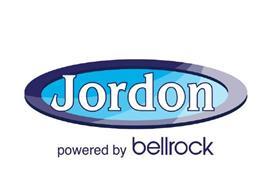‘ROLL UP, ROLL UP....closing at a location near you. Be one of the last people to buy a gallon before it shuts.’ All over Britain the shutters are going up and the fascias are coming down as the oiler’s finally concede that not only will the hypers not disappear but also that they’re not going to change a winning formula.
IT WAS SIX OR SEVEN YEARS AGO that BP first surprised me by its decision to start closing some sites that were happily pumping 2.5-3.5 million litres. They were driven by a clear prediction for the UK – the maximum Platts-to-pump margin that could be expected for the foreseeable future was 3p. If you couldn’t whip yourself into shape to make a return at that level then the writing was on the wall. Like many radical prophecies, this vision on the road to Damascus was probably a little ahead of its time, but in the slightly longer term has proved correct – some might say a tad too optimistic! While not necessarily being solely down to this forecast, it seems that BP’s rise to being the (oil company) market leader since then is not a coincidence.
IT HAS BEEN A SLOWISH PROCESS for the rest of the industry to catch up, but when even Eleffantt Oil finally join in you know that the penny must have dropped. By which time BP had already moved another step further by deciding to exit from all but a few co-owned sites. So in what direction does the future of oil company involvement lie? At the simplest level, the most obvious route is that of a pure wholesaler with no retailing aspirations. If all supply contracts were on a Platts-plus basis it would make for a very simplistic operation. Out-source deliveries, out-source order taking, legal, administration and accounting, out-source marketing (assuming you believed promoting the brand was important), crank up the computer system to fully automate the invoicing and pricing functions and what are you left with? One boss and half a dozen reps, whose only function is to secure new business. Profit forecasting becomes relatively simple. Within five per cent or so you know your annual volume, multiply that by your minimum profit factor over Platts, whether it be 0.5p or 1p, and bingo, there is your almost risk-free guaranteed income.
SO IS THIS WHAT WILL HAPPEN? Well, maybe for some of the oilers, but I can’t see it that way for most. The first snag with the simplistic route is that it pre-supposes that when you do all the sums you get a result that produces an acceptable rate of return. Secondly it ignores the self-interest of the people currently employed – turkeys voting for Christmas comes to mind! Thirdly it ignores the fact that such an operation is so simple it totally reduces the barriers of entry to the market, thus encouraging other companies to set up and eat away at your sales. But the main reason I don’t think this will be the way forward for the majority is the underlying culture of ‘penis-envy’ that pervades the majors. They’re all absolutely terrified that retailers might make too good a living! It’s the age-old problem. Do you want an increase of £10 a week if the other guy gets £20, or that both of you get an increase of £5 a week.
YOU HAVE TO REMEMBER the history of the past 35 years. The oilers may have started out wanting to own their own sites so they had guaranteed outlets for their product, but they just couldn’t leave it at that. They started with tenants – ooh they’re making too much – changed to licences, then to own operation, to franchises, to com-ops. What they never understood was that the profit they envied usually disappeared when they removed the entrepreneur.
AND SO WE SEE the current split in the ranks. A few months ago it was Platts deals only, boys. Now it’s Platts deals in areas where the market is tight but margin deals where the market is reasonable. When will they realise that those are the areas predominated by dealers. Show me the money, stupid!























No comments yet